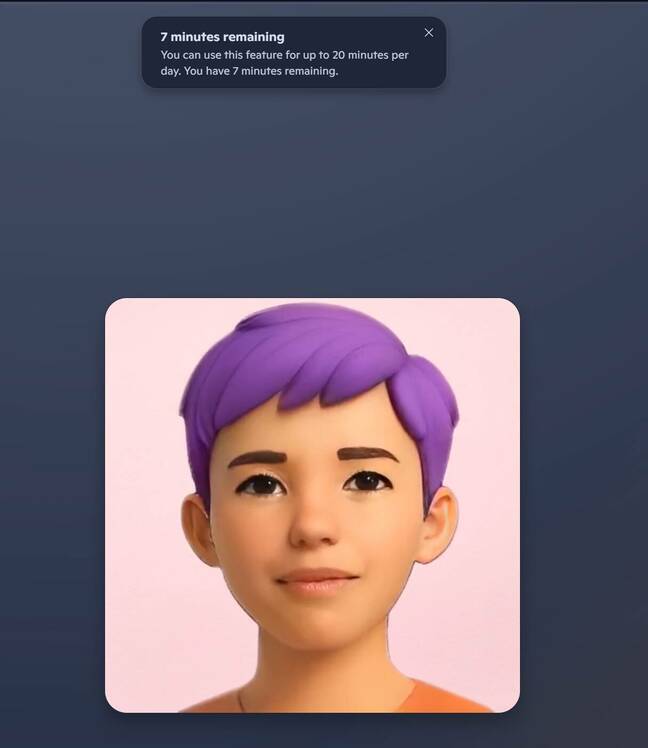Microsoft is testing talking avatars for Copilot to see if users feel more at ease chatting with a face instead of just a text box. Our US Editor tried them out, only to find the digital stare was more creepy than comforting.
Dubbed Copilot Portraits, Redmond's AI will offer a choice of 40 avatars to interact with, along with a selection of synthetic voices. Microsoft is trying this out because, while text-based prompts are the norm, many users prefer talking to their bot instead of typing, according to Mustafa Suleyman, CEO of Microsoft AI and former co-founder of Google DeepMind.
"We’ve heard from some users that they'd feel more comfortable talking to a face when using voice. So in the US, UK, and Canada, we’re rolling out a new Copilot Labs experiment where you can talk with animated portraits," Suleyman said.
"Some users may not see it right away. This is very much a prototype to help us learn more about how people feel talking to an AI."
The designers deliberately made the avatars non-realistic and animated them to simulate active speech. Redmond is carefully monitoring the limited trial by placing strict time limits on how long users can interact with their digital buddies and excluding those under 18 from using the system.
"We’re taking our time with this experiment to ensure we’re providing a positive, safe, and engaging experience for everyone," the Copilot team said in a blog post. "In addition to maintaining the same guardrails and content filters already available."
- Microsoft insists Copilot+ PCs are 'empowering the future' – reality disagrees
- Microsoft unveils home-made ML models amid OpenAI negotiations
- Microsoft puts ex-DeepMind boffin in charge of London AI hub
- Forget vibe coding - Microsoft wants to make vibe working the new hotness
Certainly, the rollout is slow enough that some Reg hacks like this Vulture can't access it yet. However, US Editor Avram Piltch was able to get it working on his PC. He tried using a couple of different avatars, including the purple-haired androgynous person and the young Asian man with a brown background. When he clicked through, the avatar appeared in the middle of a black screen with microphone controls below it. By default, his microphone and speaker were activated, so he was able to converse immediately with the bot and watch its expressions.
Each avatar has a different accent and Piltch found that they pronounced his name differently, with some using a long A (correct) and some using a short A. He asked the man, who had a British accent, what kind of accent he had, and the first time he asked, the avatar described it as from south London. However, when Piltch asked in a second session, the same avatar said he had a "neutral American accent," despite clearly being British.
Later, he asked the purple haired person how many digits Pi has. "Well Pi is infinite so it has an infinite number of decimal places. We usually round it to a couple of digits like 3.14, but you can keep going as long as you want," it said.
Occasionally, the avatars' speech would appear to be cut off for a second or two by static as if they were on a phone with a bad connection. Piltch also said it was creepy having the avatars appear to be staring at him through the screen with their eyes and faces moving even in between prompts. And it was even more off-putting for him to have each avatar, as soon as it loads, greet him by his first name and say things like "hey there Avram! So what's your mind today: something random, something curious or maybe just a fun fact to dive into?" This made him feel like he was being watched.
Microsoft is also placing a 20-minute time limit on how long you can use the avatars. After using them for a total of 13 minutes, Piltch got a warning that he had seven minutes left.
These Portraits are a step along the road that Suleyman announced earlier this year, with the preview of Copilot appearances. In April, he showed off a variety of avatars that Microsoft was playing with, from a simple talking blob to something more stylistic - with even Clippy being touted as an example, presumably for historical masochists.
Given it has been five months since that presentation, and the best Microsoft could come up with was generic faces with moving mouths, then progress is going slowly. But it highlights Suleyman's quest to make AI more human-like, something he has been actively pursuing since leaving Google to set up Inflection AI, and then moving to Microsoft.
Whether or not the wider public wants, or is ready, for talking AI avatars remains to be seen, but Portraits is a step along this road. ®
.png)






